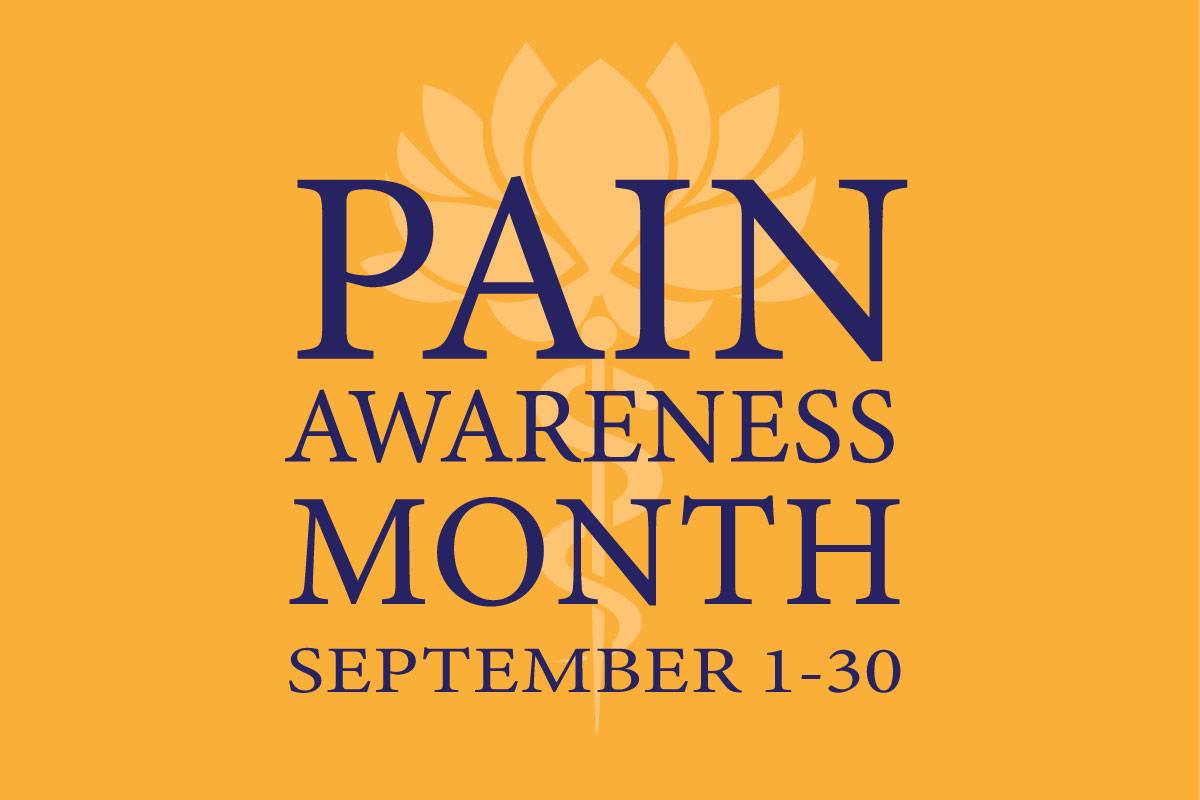
5 Ways We Can Keep Your Immune System Strong
December 10, 2025/by Kaplan Center
Want to Take Your Workout to the Next Level Next Year? These Tips Can Help
December 8, 2025/by Kaplan Center
Dr. Kaplan’s Dos and Don’ts of the Holiday Season
December 3, 2025/by Kaplan Center
Let’s Talk Webinar – A Root Cause Q&A
December 2, 2025/by Kaplan Center
Navigating Holiday Meals with Gut Issues: Simple Tips for a Comfortable Season
December 1, 2025/by Chardonée Donald, MS, CBHS, CHN, CNS, LDN
Craniosacral Therapy for TMJ | Say Goodbye to the Daily Grind
November 19, 2025/by Patricia Alomar, M.S., P.T.
From Compassionate Care to Personal Healing: A Letter to My Patients
November 18, 2025/by Kaplan Center
8 Steps to a Healthier Gut—and a Longer, Healthier Life
November 18, 2025/by Kaplan Center
Mid-Life Irritability & Fatigue Improved by Hormonal Balancing
November 13, 2025/by Lisa Lilienfield, MD
From Challenges to Change: Dr. Kaplan on Healthcare’s Biggest Challenges
October 29, 2025/by Kaplan Center
Overlooked Dangers of Mold Exposure and How to Stay Safe – Dr. Kaplan Talks to WUSA9
October 27, 2025/by Kaplan Center
Let’s ‘Fall’ Into Wellness: A Nutritionist-Approved Immune-Boosting Recipe for Cold and Flu Season
October 13, 2025/by Chardonée Donald, MS, CBHS, CHN, CNS, LDN
PANS/PANDAS – When Sudden Symptoms Signal Something More
October 9, 2025/by Kaplan Center
Beating Burnout, A Nutritionist’s Perspective
October 1, 2025/by Chardonée Donald, MS, CBHS, CHN, CNS, LDN
3 Things That Can Happen After Stopping GLP-1s
September 11, 2025/by Chardonée Donald, MS, CBHS, CHN, CNS, LDN
What Families Need to Know About COVID and Flu Season
September 3, 2025/by Kaplan Center
September is Pain Awareness Month
September 1, 2025/by Kaplan Center
Dr. Kaplan Spoke to Northern Virginia Magazine About COVID, Flu, and Immunity — Here’s What You Should Know
August 14, 2025/by Kaplan Center
“Why Do I Feel Like Crap?”: The Overlap Between Long COVID and Perimenopause
July 30, 2025/by Kaplan Center
Why People Are Turning to EMDR (and Why You Might Want to Too)
July 23, 2025/by Kaplan CenterAre you looking to improve your overall wellness?
Personalized care you can trust.
Our integrative, non-surgical treatment approach is highly successful in maintaining wellness and also treating chronic pain and illness. For more than 30 years, we have delivered superior, cutting-edge health care in the Washington, DC area.
QuickLinks
Contact Information
Tel: 703-532-4892
Fax: 703-237-3105
6829 Elm Street, Suite 300
McLean, Virginia 22101
Map It
Hours of Operation
Mon – Thu : 8 am – 5 pm, ET
Fri : 8 am – 12 pm, ET
Concussion: Signs, Symptoms, and What To Do
/in Conditions/by Patricia Alomar, M.S., P.T.Sports-related concussions (SRC) are a growing public health concern. According to the Centers for Disease Control and Prevention (CDC), 1.5 million Americans suffer from a Traumatic Brain Injury (TBI) each year, and three-quarters of these are classified as concussions or “mild” head injury. But the side-effects of a concussion can be anything but mild. A single incident can result in weeks of recovery, missed obligations, lingering headaches and even migraine, brain fog, and dizziness. The cumulative effect of multiple concussions is even more profound and can lead to an increased risk of neurodegenerative health problems later in life.
While getting back in the game and “shaking it off” may be appropriate in certain situations, anyone who suffers a blow to the head during practice or a game should immediately stop playing, particularly young, active children whose brains are not yet fully developed and therefore more susceptible to injury. Downplaying the incident or ignoring it, particularly in the minutes just after it occurs, could result in longer recovery as this study in Pediatrics concluded: “SRC recovery time may be reduced if athletes are removed from participation. Immediate removal from play is the first step in mitigating prolonged SRC recovery . . . “
Dr. Bennet Omalu’s research on professional football players and chronic traumatic encephalopathy (CTE) brain degeneration was highlighted in the major motion picture Concussion and helped put this conversation into mainstream media. Now, communities and organizations around the country, drawing on the research of Dr. Omalu and others, are working diligently to increase concussion awareness among coaches, players, and parents, and to develop protocols for dealing with sports injuries.
Most of those who suffer a concussion do make a complete recovery. But knowing what to do when a head injury happens is as important as knowing CPR.
Symptoms of Concussion
Despite what you see in movies and on television, loss of consciousness typically does not occur with a concussion. Furthermore, the onset of symptoms can be delayed for hours or even days after a head injury, so stay alert for any new symptoms or behavioral changes during this post-injury period. Symptoms can include:
5 DANGER SIGNS
Seek immediate medical attention for anyone exhibiting any of the following symptoms:
If none of the five big danger signs above are present, then it is ok to treat symptoms at home, following some basic guidelines:
It is important to communicate with a physician throughout the recovery process, especially if symptoms aren’t improving, or recovery is slow. In addition to physical symptoms, an untreated concussion can cause changes to brain structure that result in cognitive difficulties, personality changes, and altered emotional functioning.
Supplemental Medical Therapies to Support Recovery from a Brain Injury
Be realistic about the course of recovery. In the case of concussion or severe TBI, the course of recovery generally follows the same pattern: an initial period of impaired brain function, a period of improvement, and a period where the mental functioning stabilizes without significant additional deterioration or improvement. All of these stages can last hours, days or months, or the case of severe injury, years. Other factors affecting the extent and speed of recovery include the resiliency of the injured brain (especially if there is a history of concussion), the subsequent recurrence of brain injuries or sickness, and lifestyle choices such as getting sufficient rest, nutrition, exercise, and mental activity.
The best medicine is always prevention, but when a head injury does occur, a prompt diagnosis and appropriate treatment are essential to minimizing or avoiding serious health consequences.
Give the brain time to heal. The two-pound tissue between our ears is worth protecting!
Patricia Alomar, M.S., P.T. & Gary Kaplan, D.O.
5 Healthy Foods That Are Even More Nutritious When Paired Together
/in Nutrition/by Gary Kaplan, DOTo maintain optimal health, our bodies need vitamins, minerals, and phytonutrients. Whole foods, like fruits, vegetables, whole grains, legumes, and nuts, are packed with these important compounds. They naturally help us boost our immune system, fight inflammation, and ward off chronic illness.
But as a physician and founder of the Kaplan Center for Integrative Medicine, I also explain to my patients that optimal nutrition can go one step further. Have you heard of food synergy? It’s an idea that has gained popularity in recent years and it maintains that certain components of different foods can work synergistically to bring greater nutritional benefit to our bodies.
For example, turmeric combined with black pepper (or more specifically piperine, a compound found in black pepper) increases the absorption of turmeric’s active ingredient, curcumin. Curcumin has powerful antioxidant and anti-inflammatory properties that help prevent free radical damage and calm the inflammatory process at the root of many chronic diseases. This is a great illustration of food synergy at work — in which the right combination of substances work together to increase nutritional value and bring greater benefits to your body.
Interested in adding this idea to your diet? You might not realize it, but many common snacks and meals you already eat put the concept of food synergy into practice. Here are a few key examples of these pairings, and why they work.
1. Bananas & Greek yogurt
Bananas contain inulin, a plant-based carbohydrate. Research shows that inulin, when added to yogurt, can increase the growth of yogurt’s healthy bacteria, thereby helping to regulate digestion even further and boost immunity.
If you already enjoy yogurt as part of your breakfast or as a snack, make sure to choose an unsweetened Greek variety, which contains more protein, and then add your own fresh bananas.
2. Spinach with garbanzo beans & red bell peppers
While heme iron (iron from meat, fish, and poultry) is well-absorbed, non-heme iron (found in grains, legumes, certain vegetables, and nuts) is less well-absorbed. Fortunately, research shows that vitamin C (ascorbic acid) assists in the absorption of non-heme iron — important for those who follow a plant-based diet.
A spinach and garbanzo bean salad (rich in non-heme iron) combined with fresh red bell peppers, a good source of ascorbic acid, makes a delicious and healthful meal, particularly for those who may be at a higher risk of iron deficiency.
Questions? Give Us a Call!
703-532-4892 x2
3. Vegetables & olive oil
Research suggests that vegetables, particularly colorful ones such as tomatoes, peppers, spinach, broccoli, and kale, should be eaten with healthy monounsaturated oils — such as olive oil — to increase your body’s absorption of carotenoids, a type of phytonutrient that has powerful antioxidant and anti-inflammatory properties.
Adding whole eggs or avocados, which contain healthy monounsaturated fats, to a salad will also help to boost the absorption of carotenoids.
4. Green tea & lemon
A 2007 study from Purdue University found that adding either citrus juices or vitamin C to green tea will boost the absorption of catechins, a powerful naturally occurring antioxidant found in the tea.
Why is this important? Studies have shown that catechins have cancer-preventing effects and that they can also positively affect cardiovascular health because of their antioxidative, anti-hypertensive, and anti-inflammatory effects.
5. Dark chocolate & apples
This combination isn’t just delicious — it can also help improve cardiovascular health. Dark chocolate (70 percent cacao or more is best) is rich in catechins, and apples are a rich source of the flavonoid quercetin. When eaten together, research suggests that the catechins and quercetin work synergistically to inhibit platelet adhesion to collagen.
The Bottom Line:
Some foods were just meant to be eaten together! While these are great examples to keep in mind, the simplest way to put the concept of “food synergy” into practice is to eat a wide variety of whole foods. Doing so ensures that you receive the key nutrients your body needs to thrive.
We are here for you, and we want to help.
Our goal is to return you to optimal health as soon as possible. To schedule an appointment please call: 703-532-4892 x2
Do you…
Or, if you’ve been diagnosed with or suspect you have a more serious nutritional problem like IBS, Crohn’s, Colitis, SIBO, or GERD, the Kaplan Center can help you.
When nutrition plays a role in a your medical problems – and this is often true – our goal is to investigate the root cause of your discomfort and not just treat the symptoms. We use an Integrative & Functional Nutrition (IFN) approach to to identify underlying imbalances or deficiencies that may be impacting your health.
If you’re ready to make a change and need help, please give us a call today.
6 Ways to Improve Acid Reflux Symptoms Naturally and Stay Heart Healthy
/in Digestive Issues, Wellness/by Gary Kaplan, DOIn 2015, a study from Stanford University suggested that the long-term use of certain medications used to treat symptoms associated with acid reflux can increase one’s risk of having a heart attack. Since its publication, studies continue to confirm its findings.
These medications, known as Proton Pump Inhibitors or PPIs, include the brand-names Prevacid, Nexium, and Prilosec, and are the strongest medications available to counter the effects of excess stomach acid. They are used to both prevent and treat ulcers, and to treat gastroesophageal reflux disease (GERD). PPIs are among the most widely prescribed class of medications in the United States.
About the 2015 study
After analyzing millions of medical records to find a relationship between heartburn medications and cardiovascular risk, researchers found that there was indeed a link between the two variables; people who used a PPI as part of their treatment for GERD had an elevated risk of suffering a myocardial infarction, commonly known as a heart attack. Furthermore, they found that this risk did not apply to patients who used another class of heartburn medications, called H2 blockers, which include brand names such as Pepcid or Zantac.
More recently, research has confirmed that the long-term use of PPIs not only increases the risk of a cardiac event, but can also increase the risk of dementia.
It’s important to note that when used appropriately as a short term treatment, PPIs can be effective to ease acid reflux symptoms. However, since PPIs are available over the counter, the risk of over-use increases as individuals are not necessarily aware of the long-term risks.
Questions? Give Us a Call!
703-532-4892 x2
Equally important to note is that some people who use a PPI may have a pre-existing condition that can cause an increased risk of having a heart attack. For example, obesity, alcohol consumption, and smoking are all risk factors for heart disease, and have all individually been shown to increase symptoms of acid reflux and GERD in clinical trials. These lifestyle factors must be taken into consideration before use. The bottom line is that one must always assess the actual risks and benefits of any medical intervention, and explore other possible interventions, before starting any medication.
6 Ways to Improve Acid Reflux Symptoms Naturally and Stay Heart Healthy
Additional resources:
Updated Insights on Cardiac and Vascular Risks of Proton Pump Inhibitors: A Real-World Pharmacovigilance Study
Association of Proton Pump Inhibitors With Higher Risk of Cardiovascular Disease and Heart Failure
We are here for you, and we want to help.
Our goal is to return you to optimal health as soon as possible. To schedule an appointment please call: 703-532-4892 x2
Updated February 16. 2023.